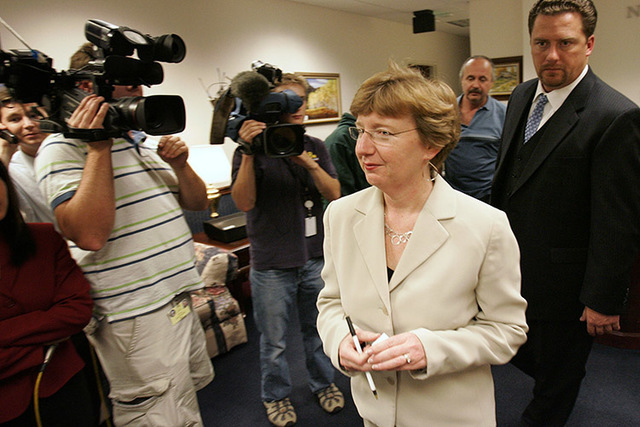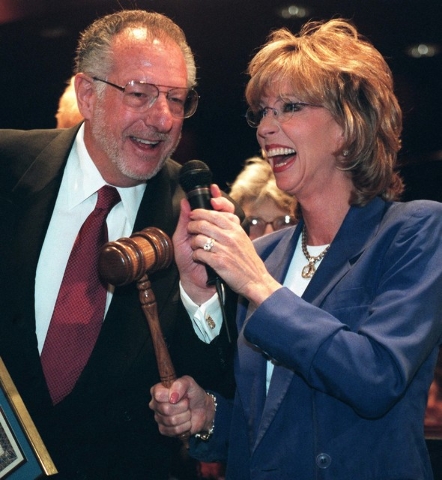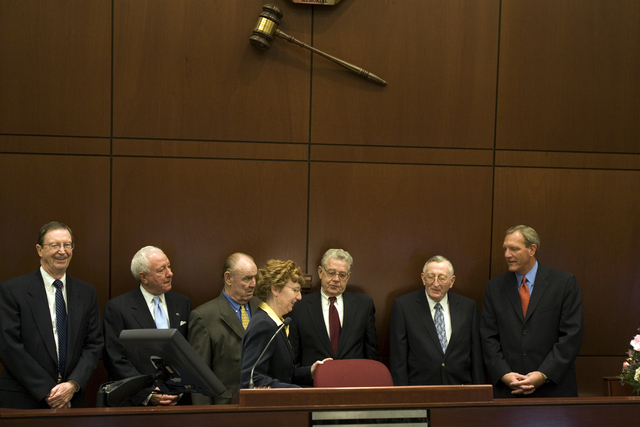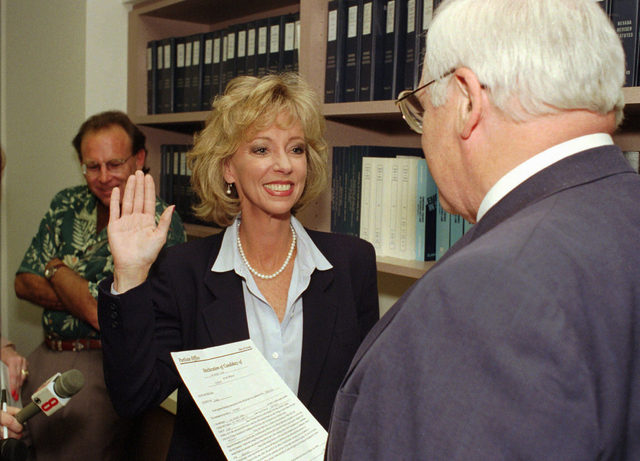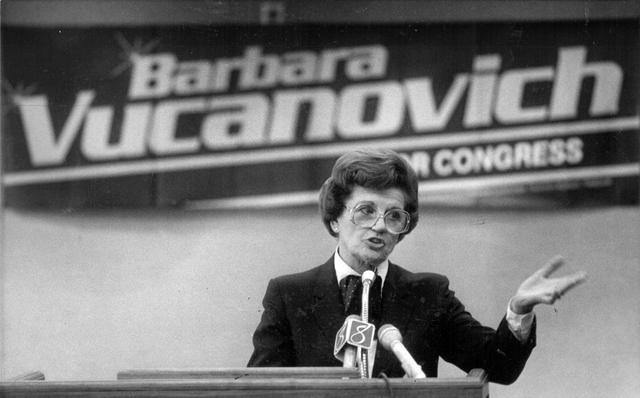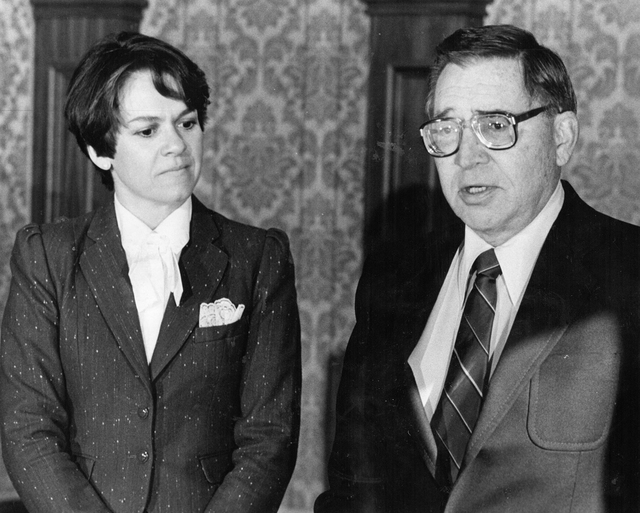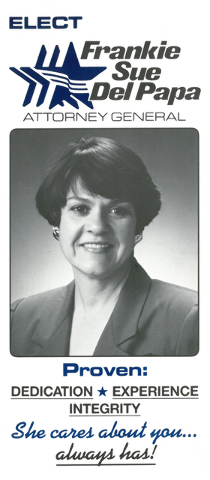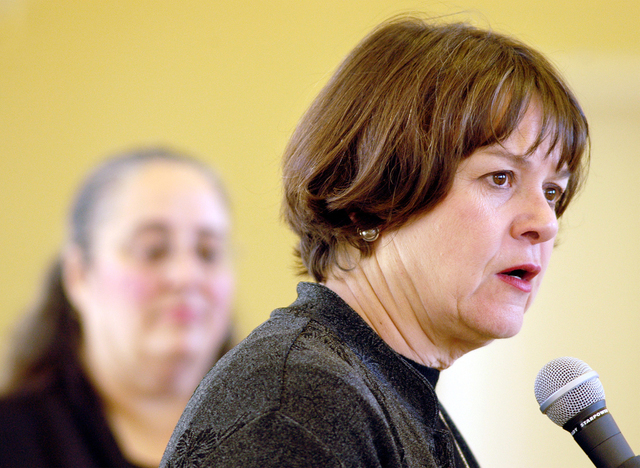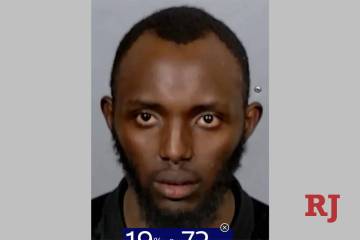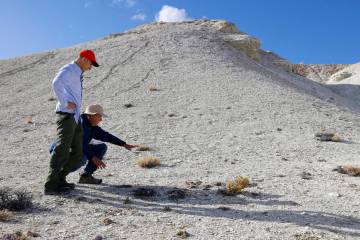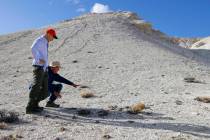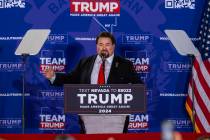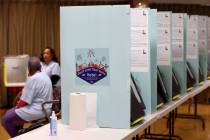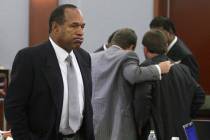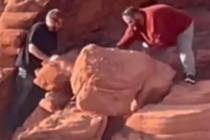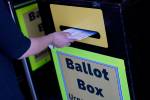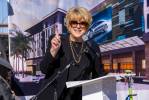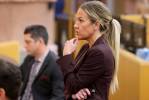Women in Nevada scale the pinnacles of politics — or at least most of them
CARSON CITY — Sue Wagner well remembers the questions she got when she first ran for the Nevada Assembly in 1974.
“People asked if my husband was going to divorce me, or were my kids going to grow up to be juvenile delinquents,” said Wagner, who was then a 34-year-old Reno Republican.
Wagner won that election and was a respected voice in the Nevada Legislature for the next 20 years and a champion of women’s rights.
She wasn’t the first woman elected to the Legislature. That distinction goes to Sadie Hurst, a Washoe County Republican elected to the Assembly in 1918. But Wagner’s experience and those of other women who’ve both won and lost Nevada political contests illustrate how far the state has come over the last four decades and spotlight the milestones yet to be reached.
Today, 33 percent of Nevada legislators are women, ranking Nevada fifth among states for women representation in state legislatures, according to a recent analysis by The Associated Press of figures compiled by the National Conference of State Legislatures. The proportion compares with a statewide 50-50 gender split in the overall population.
Women in Nevada have been able to vote in statewide elections since 1916 — four years before the 19th Amendment giving women nationwide the right to vote was ratified. Since that time, 131 women have served in the Nevada Legislature, according to research from the Legislative Counsel Bureau. Only one county — Douglas — has never been represented by a woman in the Legislature.
However, Nevada is one of 23 states that has yet to elect a woman governor, and among 22 states that has never had a woman serving in the U.S. Senate, the AP reported. Democratic Senate candidate Catherine Cortez Masto would become Nevada’s first woman elected to the elite body if she wins in November.
Still, Nevada in recent memory has had a litany of strong women candidates who’ve scaled the pinnacles of politics.
“Our state, no matter what anybody says about Nevada, I think the voters here are willing to give you a chance,” said Frankie Sue Del Papa, a Democrat who in 1986 became the first woman elected secretary of state. She followed that four years later by becoming the first woman elected Nevada attorney general, a post she held for 12 years.
Women who’ve experienced Nevada’s political arena say it’s just a matter of time — or rather timing, preparedness, opportunity and a little bit of luck — before a woman holds the state’s highest elected offices.
The last woman to run for governor was Dina Titus, a Las Vegas Democrat who lost to Republican Jim Gibbons in the 2006 gubernatorial contest. Titus, who served 20 years in the Nevada Senate, was elected to Congress in 2008 and now represents Nevada’s 1st Congressional District.
She is currently the only woman among Nevada’s four members in the House of Representatives. Only two other women have served in that capacity.
The late Barbara Vucanovich, a Reno Republican, was the first woman in Nevada to join Congress. Vucanovich was elected in 1982 after the state’s 2nd Congressional District was formed. That election was a glass-shattering family affair. That same year, Vucanovich’s daughter, Patty Cafferata, was the first woman elected to a state constitutional office, winning the race for state treasurer.
Before Titus’ unsuccessful run for governor, Jan Jones — the first woman mayor of Las Vegas, from 1991-1999 — twice sought the governorship but fell short. She lost the Democratic primary to incumbent Gov. Bob Miller in 1994. She ran again four years later when the seat was open, winning the Democratic nomination but losing the general election to Republican Kenny Guinn.
“Jan was an extraordinarily qualified candidate,” Del Papa said. “So was Dina. The problem with politics, you can be the best candidate and still lose the election.”
Looking back, Jones, now known as Jan Jones Blackhurst, said gender may have contributed to her losses, but she doesn’t believe it was a deciding factor.
“I think it may not have had I been more seasoned as a political candidate and picked my races to run in more thoughtfully,” she said.
“I have to factor in my own naivete and misjudgment. It was more of a problem than my gender,” said Jones Blackhurst, who is now a vice president at Caesars Entertainment Corp.
“I think I should never have run against Bob Miller. It was too early. I needed to do my job and do it well. And then thoughtfully have picked the right time and right opportunity to run,” she said. “But I don’t regret any of it.”
In the late 1980s, Wagner was widely viewed as the first woman most likely to ascend to the governor’s mansion. Then tragedy intervened.
Running for lieutenant governor in 1990, Wagner was seriously injured in a Labor Day plane crash after campaigning in Fallon. The small plane was flown by Bob Seale, then a Republican candidate for state treasurer. Seale’s wife was killed. Two others onboard suffered less serious injuries.
Wagner suffered a broken neck and back but went on to win the election, becoming the first woman elected lieutenant governor. But her injuries took a toll and she never again ran for office.
“It changed my life, that plane crash,” Wagner said. “I was not physically able to run for office.”
Former Assemblywoman Barbara Buckley was the first woman to hold the position of majority leader and then speaker of the Nevada Assembly in 2007 and 2009.
The Las Vegas Democrat said she didn’t really consider gender in the pursuit of her political ambitions.
“I think certainly you have to go into it with a mindset that I’m not going to be held back because of my gender,” she said. But she also saw the difference she and other women have made with their accomplishments.”
“Male lobbyists brought their girls in to see me at the podium. That was significant,” Buckley recalled. “It was striking because they wanted their daughters to see, visually, that women could have any position they set their minds to.”
After being termed out, Buckley contemplated a run for governor in 2010 but opted not to because of family considerations. She is executive director of Legal Aid Center of Southern Nevada.
She and others say Nevada still has a way to go to close the gender gap in elected office.
In her 2007 speech accepting her historic place as Assembly speaker, Buckley said, “While women have made significant progress, I think we all look forward to the day when we are not celebrating any more ‘firsts,’” she said.
She waits for the day “when we take it for granted there are similar numbers of women and men in every elected position,” Buckley said in a recent interview.
“Certainly we’re not there yet.”
Wagner could not agree more.
“I would hope that young women today who have children are not asked those same questions that I was,” said Wagner, now 76 and a registered nonpartisan voter.
For the record, her husband, Peter, did not divorce her. An atmospheric physicist, he and three other scientists at Desert Research Institute died in a 1980 plane crash while conducting research. Her children turned out just fine. Her son is an attorney. Her daughter holds two master’s degrees.
And Wagner would love to witness the political first that was snatched from her own realm of possibilities all those years ago.
“I hope before I kick the bucket I will see a woman governor,” she said.
Contact Sandra Chereb at schereb@reviewjournal.com or 775-461-3821. Follow @SandraChereb on Twitter.



